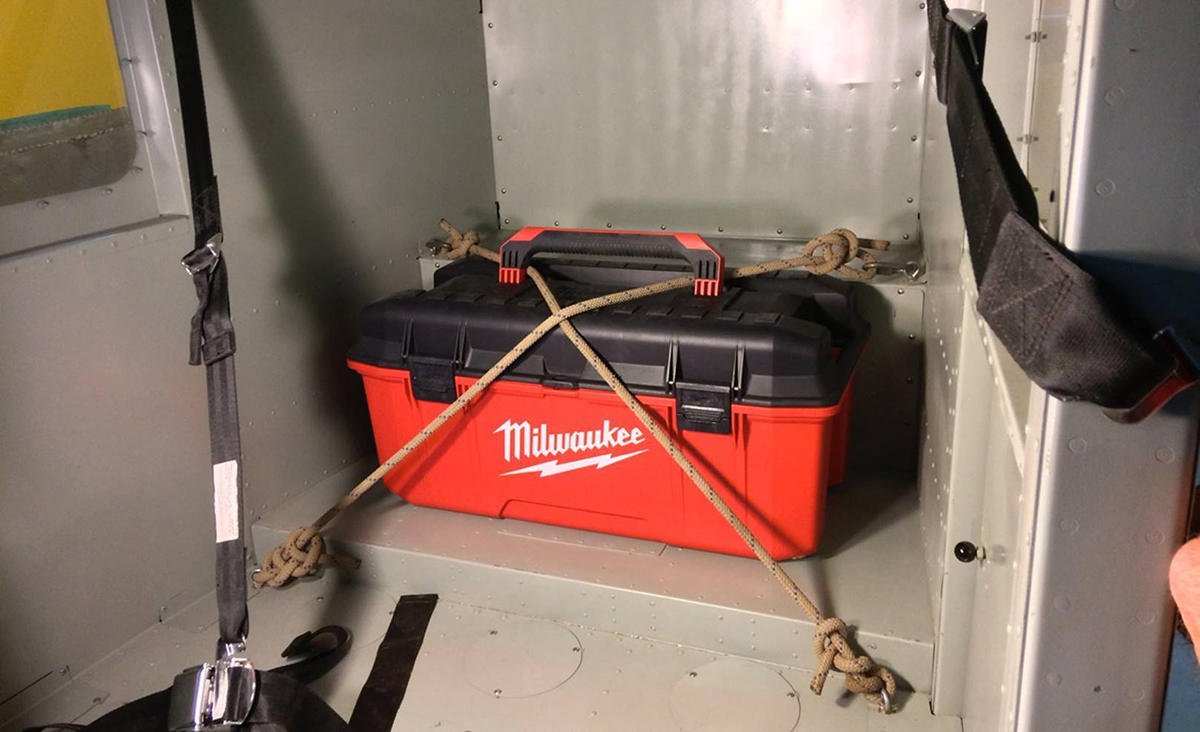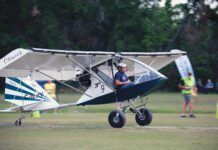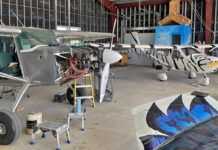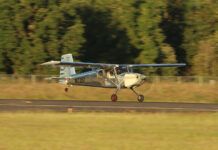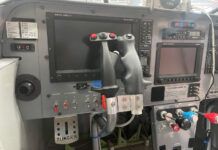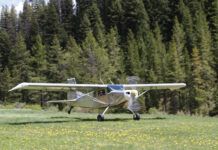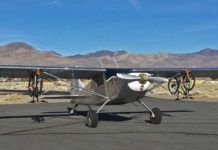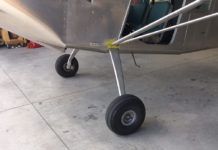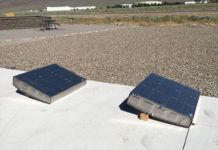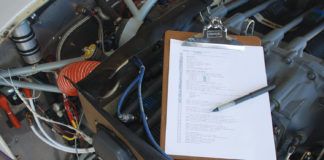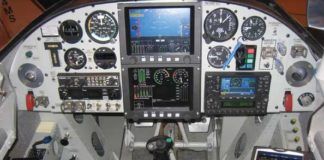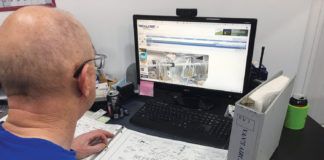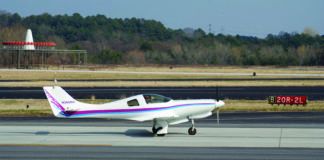One of the things we all have to do when fight testing an airplane is to fly it across the entire CG range – from full forward to full aft. In the case of a side-by-side two-seater, this generally isn’t too hard, because the CG range is actually fairly short. With a large four-seater (plus baggage), it can take a little more creativity to safely hold enough weight to get to the aft limit. By safely, I mean that we need to have the weight distributed in a structurally sound area, and SECURED so that, in the event of a mishap, it doesn’t break loose and become a missile aimed at the pilot’s head!
The solution we came up with for our Dream Tundra (an airplane designed, as my partner says, to carry four people – or two people and an elk!) was to buy a large plastic toolbox and secure it to the baggage area floor. We already had cargo tie down points installed, so all we had to do was tie the box off to the hard points. The advantage to the box is that it can hold a great deal of lead shot bags or workout weights and it contains them nicely, making the cabin neater and safer. Weight can be added or subtracted based on the test point required. Using dense weights makes the box a reasonable size, and making it plastic reduces the potential for damage to the aluminum parts of the airplane.
One other advantage that we have found, this being a bush plane, is that once we got through Phase 1, we can use the box for useful ballast. Since the airplane is basically at the front edge of the CG box with two people and fuel (seeing as it is designed to carry that elk…), we will almost always be carrying ballast of some kind., Seeing as how it is a plane designed to operate out in the wilds, and our wilds are mostly arid here in Nevada, bottles of water seem to be a very good option. We can carry the water on outbound legs, and have it for survival purposes. If we deiced we want to bring things back from those wilds (my wife being a geology professor, you can guess what that might be), we can dispose of the water ballast quite easily and bring back rocks instead. Hmmm… we might want to carry a collapsible scale in the airplane to make sure it all comes out even.
The box is handy, adds safety, and allows flexibility – a perfect solution for controlling CG.

